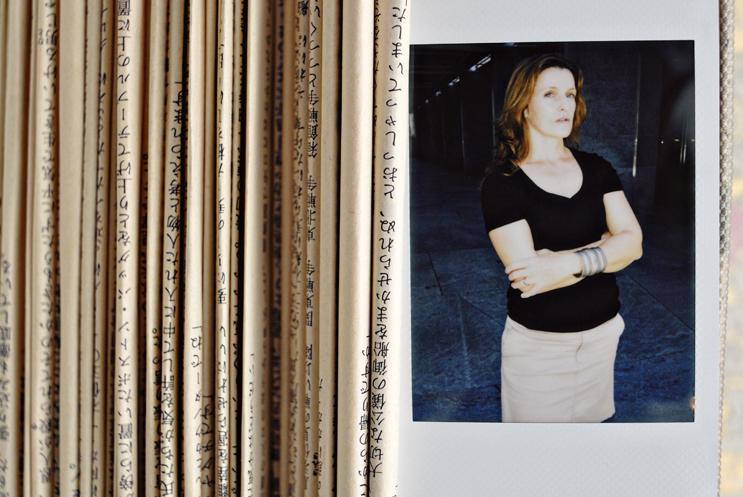

Profile Photo by John Hook
Art Photos by Paul Kodama
Artist Jacqueline Rush Lee works with books, but don’t be so quick to call her a “book artist.”
“There’s definitely a field known as the ‘book arts,’ but it’s funny, I was notified that I actually don’t fall into that category,” laughs Lee. “I think the main distinction between book artists and myself is that they actually make books from scratch. I, rather, fall into a category where I alter them.” Lee sees herself as sculptor who works with books as her medium, a new breed of material which she sees as indicative of the 21st century in it’s versatility and depth.
With a background in crafts and a master of fine arts from the University of Hawai‘i at Mānoa, Lee professes that she gravitates towards objects that possess histories and record physical processes. “I’m especially drawn to the complexity of the book as an object,” Lee says. “Not only are there histories transferred from their direct authors, but we’ve also got to consider the traces left by people who have handled them, like dog-eared pages or marginalia. And considering that I’m altering these objects, I contribute to this significantly as well.”
Her works are at first glance ethereal; undoubtedly representative of their aesthetically pre-altered state, and yet there remains the indelible sense that something has been fundamentally altered within its framework. “When I work with books, I’m interested in taking everything that we know about a book and scrambling it in such ways that it has a new voice,” she explains.
Because of the dichotomous appearances of these otherwordly creations, many are tempted to inquire on the source of her inspiration; rather, there is an urgency to inquire as to the meaning of them. Surely, I ask her, the stories of the objects have something to do with the outcome of their transformations. To this, Lee responds, “As far as meaning goes, I’d like for the art to communicate a stillness or space for communication so that viewers can project their own meanings into them.”
What is at once perplexing and intriguing about Lee, and subsequently, her work, is that she successfully creates an object that is apart from literal and narrative representation, reworking its identity from what was once a mundane, everyday object, and transforming it into a physical and metaphorical palimpsest – a document that has been altered but bears traces of the original text. In doing so, the pieces seem to acquire a new sense of tactility and consciousness.
To see the full article pick up FLUX’s COMMODITY issue on stands October 12.

